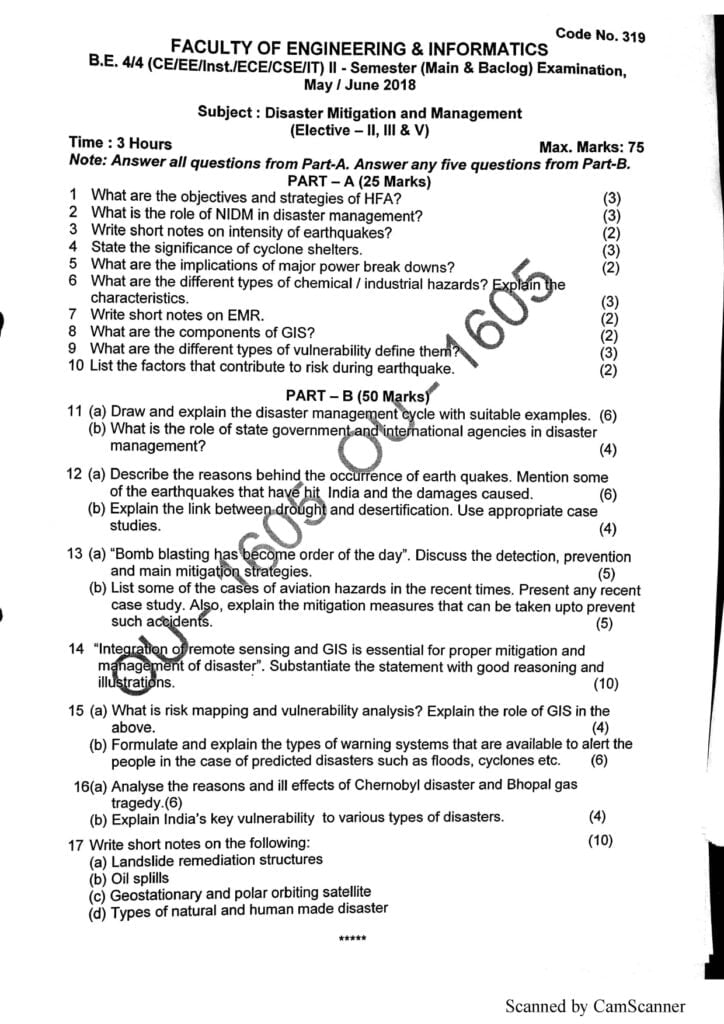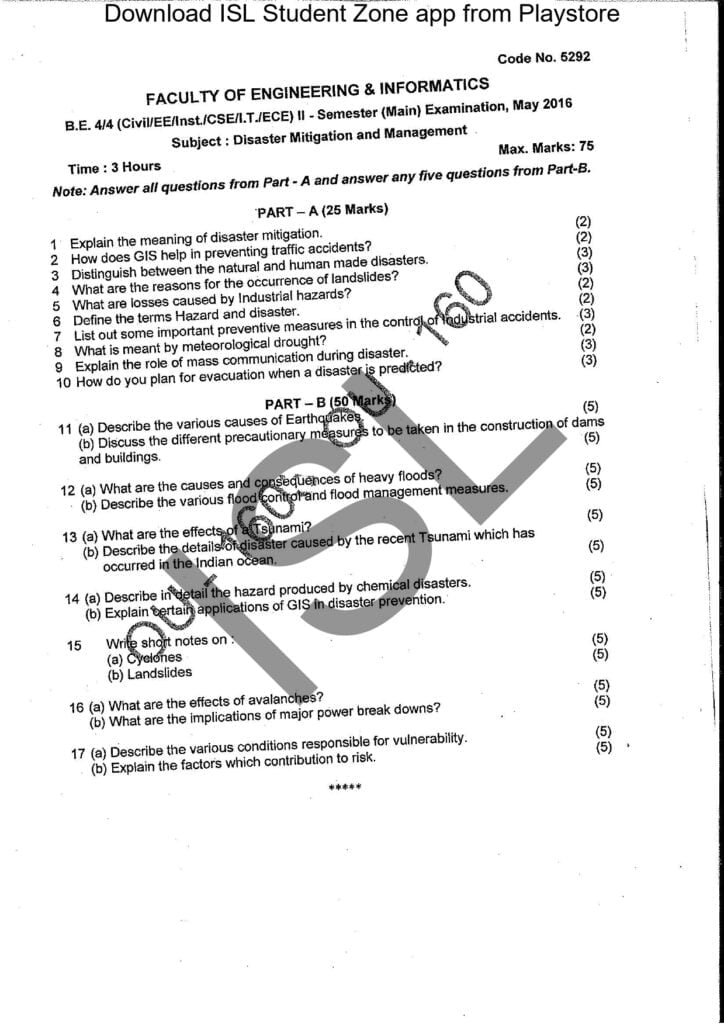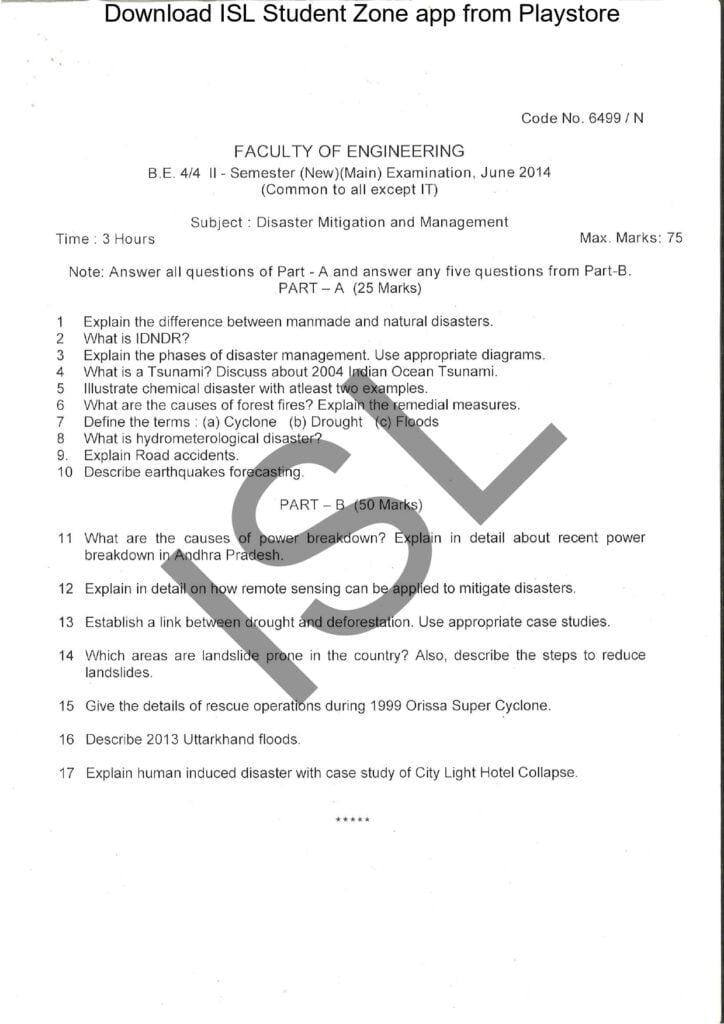
Syllabus
UNIT-I
Introduction to Disasters: Concepts and definitions of Disaster, Hazard, Vulnerability, Resilience, Risks. Natural and Manmade disasters, impact of drought, review of past disasters and drought in India, its classification and characteristics. Classification of drought, causes, Impacts (including social, economic. political, environmental, health, psychosocial, etc.).
UNIT-II
Disaster: Classifications, Causes, Impacts including social, economic, political, environmental, health, psychosocial etc. Differential Impacts, in terms of caste, class, gender, age, location, disability Global trends in disasters, urban disasters, pandemics, complex emergencies, climate change. Cyclones and Floods: Tropical cyclones & Local storms, Destruction by tropical cyclones and local storms, Cumulative atmospheric hazards/ disasters, Cold waves, Heat waves, Causes of floods, Rood hazards in India.
UNIT-III
Approaches to Disaster Risk Reduction: Disaster cycle, its analysis, Phases, Culture of safety, prevention, mitigation and preparedness community based DRR, Structural- nonstructural sources, roles and responsibilities of community, Panchayati Raj Institutions/Urban Local Bodies (PRis/ULBs), states, Centre, and other stake-holders.
UNIT-IV
Inter-relationship between Disasters and Development: Factors affecting Vulnerabilities, differential impacts, impact of development projects such as darns, embankments, changes in Land-use etc. Climate Change, Adaptation, Relevance of indigenous knowledge, appropriate technology and local resources.
UNIT-V
Disaster Risk Management in India: Hazard and Vulnerability profile of India
Components of Disaster Relief: Water, Food, Sanitation, Shelter, Health, Waste Management Institutional arrangements (Mitigation, Response and Preparedness, OM Act and Policy, other related policies, plans, programmes and legislation)
Field Work and Case Studies: The field work is meant for students to understand vulnerabilities and to work on reducing disaster risks and to build a culture of safety. Projects must be conceived creatively based on the geographic location and hazard profile of the region where the college is located.





